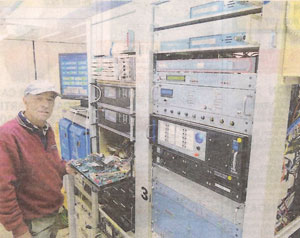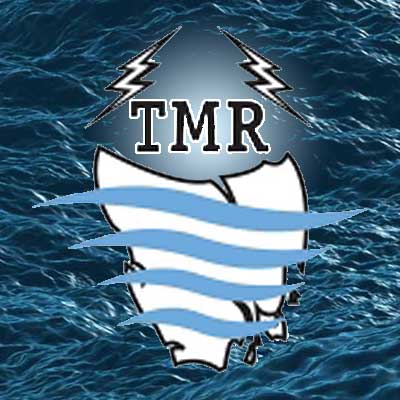Hobart Mercury
9 July 2016
Four Decades of Sea Safety
This month markes the 40th anniversary of Tas Maritime Radio, which was born as a result of an engine breakdown in the middle of the night in Storm Bay in 1975.
Barry McCann, a radio engineer, and a few friends were crayfishing when trouble struck. After having to paddle for three hours to a beach on Bruny, Barry was determined this would never happen again and an economical means of radio comunication between small boats and a shore station had to be found.
He was then manager of 7HT. With Hobart boating identity Les Collis he established a 27mHz marine radio network called the Tasmanian Smallcraft Marine Radio Group. This was made up of 14 people each putting up $200 to buy their radio equipment, licence and subscription.
Doug Bonnitcha provided a back room at his house at Margate and his son Len became base radio operator with Margate Base coming on air in mid-July 1976.

Membership grew and a VHF service was introduced. After nine years of dedicated service Len retired and Rex Griffiths took over as base operator from South Arm and the name was changed to Tasmar Radio.
In 1986 Les Collis retired as a licencee and in 1987 a remote base was established at Snug Tiers housing 27mHz, VHF and HF transceivers.
In 1999 Marine and Safety Tasmania established a repeater on Maatsuyker Island and linked it back to Tasmar Radio, beginning a close working relationship, with MAST financing the remote bases and Tasmar Radio operating them. In 1998 the 27mHz service was dropped in favour of VHF.
In July 2000 Tasmar Radio introduced Seaguard, Australia's first fully automated 24-hour position reporting service on VHF. Using Seaphone equipped radios, a skipper could transmit his position and sailing plan, with the number of people on board and destination, by simply entering a series of numbers.
In 2004, following an agreement with the Wireless Institute of Australia - Tas Division, CRH established an operations centre in Hobart Radio's old building on the Queens Domain. This meant that operators could be drawn from the public at large to man the base. In 2004 upon Mike Hooper's retirement, retired ACMA engineer Brian Muir joined the board.
A link hub was established on Hobart's Mount Nelson to link the Domain base, Port Control and the two "home operators" to the four remote bases.
This year, MAST and TMR jointly funded a remote base on Maatsuyker Island, the final link in a chain of nine remote bases giving 24/7 Channel 16 coverage of the entire Tasmanian coastline.
TMR is investigating setting up an inland base to cover the highland lakes of central Tasmania, and also the construction of a new operating centre on the Queens Domain.
With about 1200 subscribing members and support from MAST, TasPorts, TasNetworks, Telstra and the Hobart City Council, TMR continues to provide a professional and comprehensive maritime radio service in Tasmanian waters.
